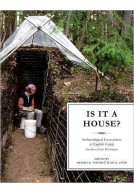Google Books previews are unavailable because you have chosen to turn off third party cookies for enhanced content. Visit our cookies page to review your cookie settings.
The Landscape of Words (Hardback)
Stone Inscriptions from Early and Medieval China
Imprint: University of Washington Press
Pages: 424
ISBN: 9780295987286
Published: 31st May 2008
Script Academic & Professional
Pages: 424
ISBN: 9780295987286
Published: 31st May 2008
Script Academic & Professional
You'll be £14.95 closer to your next £10.00 credit when you purchase The Landscape of Words. What's this?
+£4.99 UK Delivery or free UK delivery if order is over £40
(click here for international delivery rates)
Order within the next 8 hours, 14 minutes to get your order processed the next working day!
Need a currency converter? Check XE.com for live rates
(click here for international delivery rates)
Order within the next 8 hours, 14 minutes to get your order processed the next working day!
Need a currency converter? Check XE.com for live rates
In this fascinating and meticulously researched book on the Chinese landscape as a medium for literary inscription, Robert E. Harrist Jr. focuses on the period prior to the eighth century C.E. to demonstrate that the significance of inscriptions on stone embedded in nature depends on the interaction of words with topography. Visitors do not simply climb inscribed mountains, they read them, as the medium of the written word has transformed geological formations into landscapes of ideological and religious significance. The widespread use of stone as a medium for writing did not begin in China until around the first century C.E. - later than in the ancient civilizations of Egypt, the Near East, Greece, and Rome - but by the twentieth century, more inscriptions had been carved in natural stone in China than anywhere else in the world. The Landscape of Words is the first study in a Western language devoted to these texts, moya or moya shike, carved into the natural terrain on granite boulders and cliffs at thousands of sites of historic or scenic interest. Like the writing system itself, moya are one of the distinguishing features of Chinese civilization. Carved in large, bold characters, they constitute a vast repository of texts produced continuously for more than two thousand years and are an important form of public art. Harrist draws on insights from the fields of art history, social and political history, literature, and religion to present detailed case studies of important moya sites, such as the Stone Gate tunnel in Shaanxi and Cloud Peak Mountain, Mount Tie, and Mount Tai in Shangdong. The inscriptions analyzed represent a range of literary genres and content, including poetry, Buddhist sutras, records of imperial rituals, and commemorations of virtuous conduct in public life.
Other titles in University of Washington Press...













